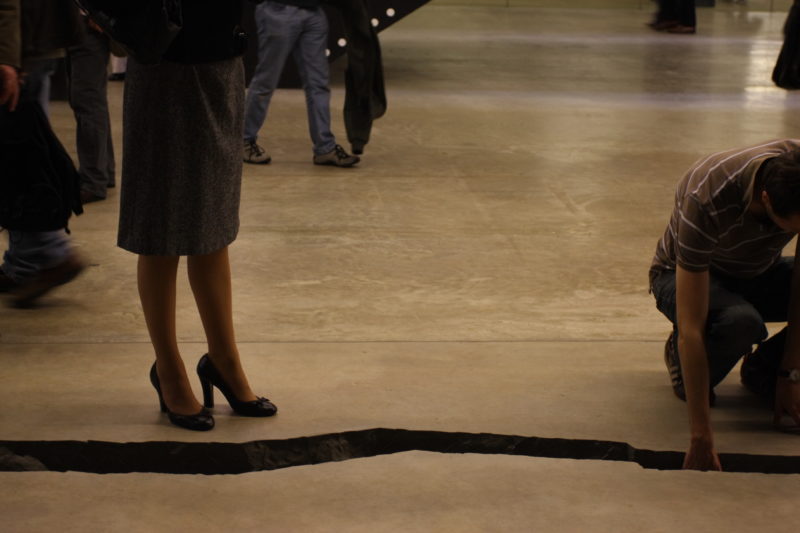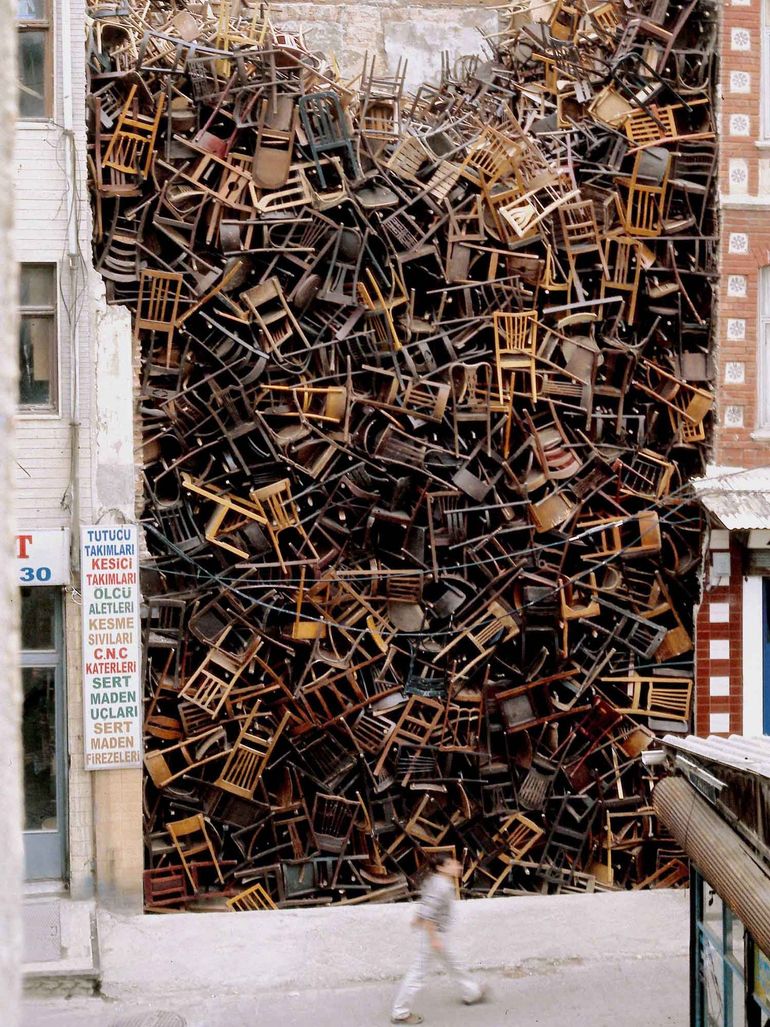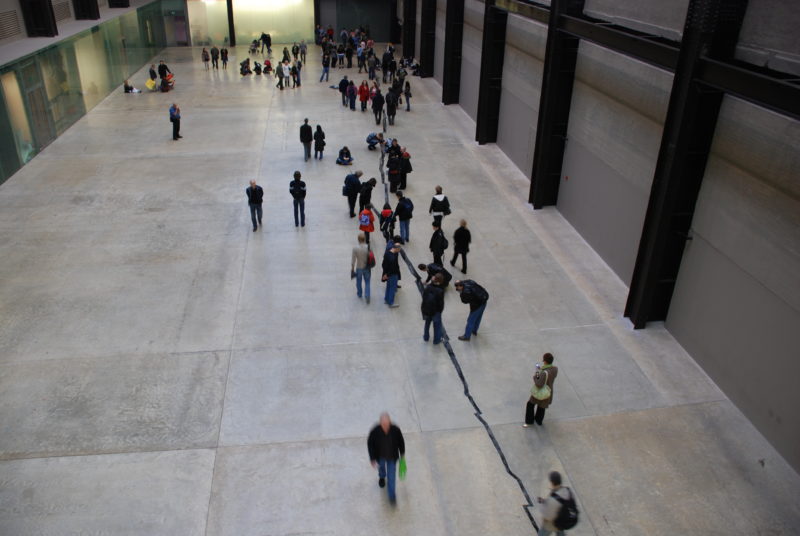
What was it?
Shibboleth was an installation piece designed and completed by celebrated Colombian artist Doris Salcedo 1 at the Turbine Hall 2 of the Tate Modern Museum 3 in London 4.
Before Salcedo created the installation itself, she created digital renderings on real photos of the Turbine Hall floor. The artist then printed the rendering before presenting them to the board of the Tate Modern as the proposal for the project.
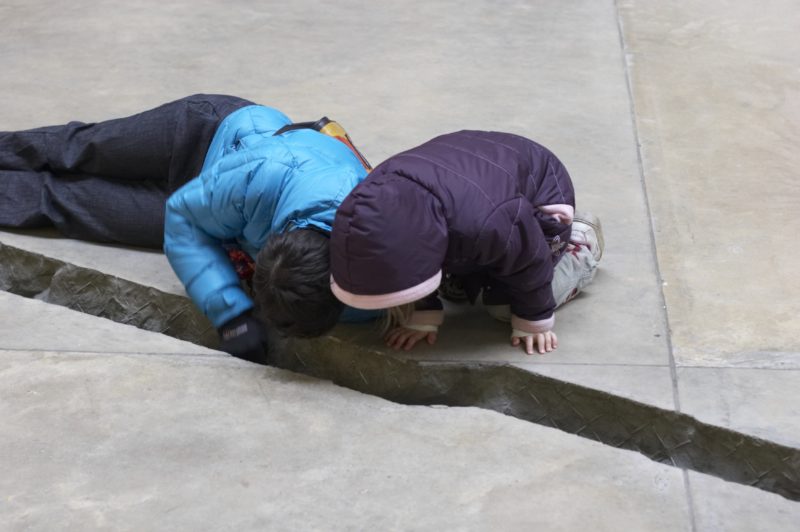
Architect Carlos Granada who helped Salcedo with the project, said 56:
I remember very clearly one day she came to us with this photocopy, a picture of Turbine Hall with a pencil drawing on top, a crack, and she said, ‘Okay, I want to crack this space into two—into halves.’
For the actual installation, Salcedo created a fracture on the floor to symbolize a disruption in time and space, as well as the outbreaks of racial hatred.
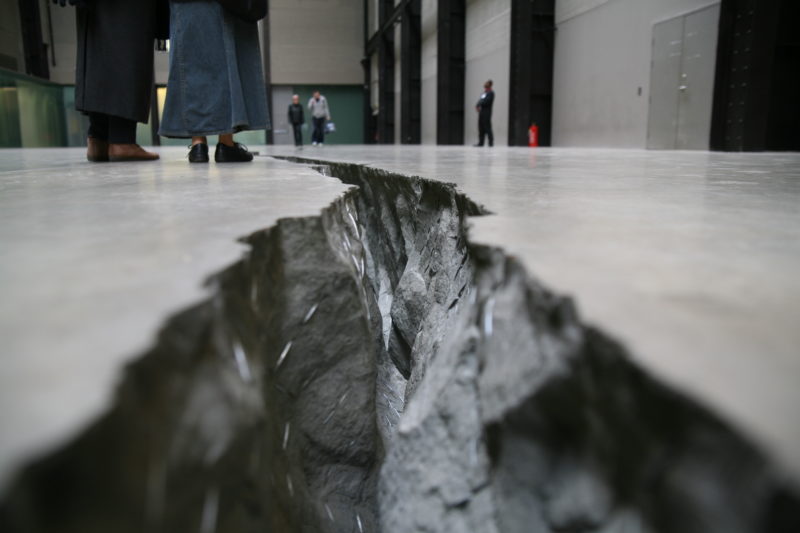
The installation took the form of a 548-foot long, winding crack in the floor of the Turbine Hall. At the start of the project, the fracture started as a small fracture on the concrete.
However, as more people visited the exhibition and walked upon the floor on which the crack was created, it grew larger and larger, eventually deepening and growing. Eventually, the hairline crack expanded to several inches of width and grew to around 2 feet deep.
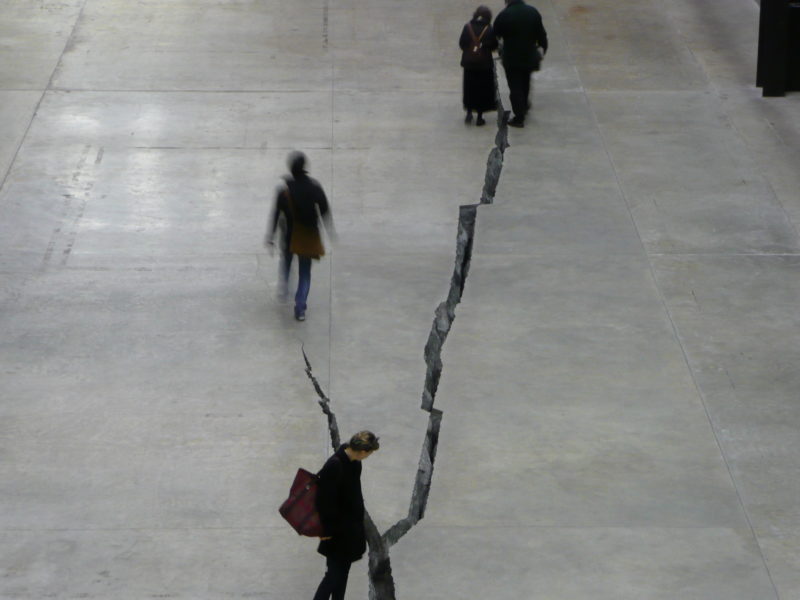
Salcedo created the crack by opening up the floor before inserting a cast from a Colombian rock face. Salcedo received assistance from engineer Stuart Smith, who is the one that revealed that the crack was created by casting a new layer of concrete on top of the existing floor slab.
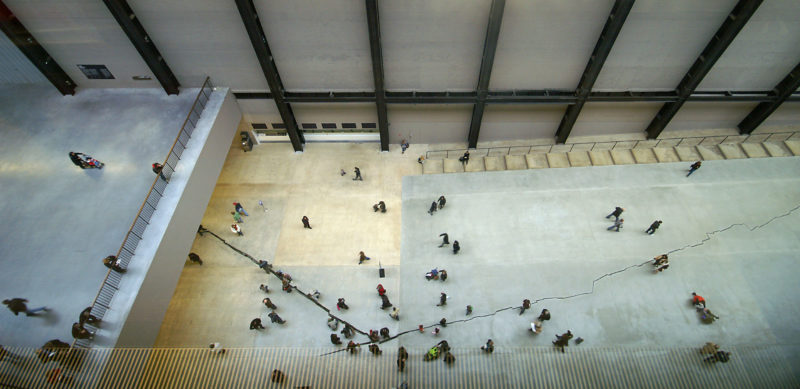
The meaning of Shibboleth
By creating the crack on the floor, the artist wanted to mark the divide that has existed between whites and non-whites throughout history. According to the artist, the history of racism has always coincided with the history of modernity, but there has always existed a dark side of racism that has remained hidden and untold.
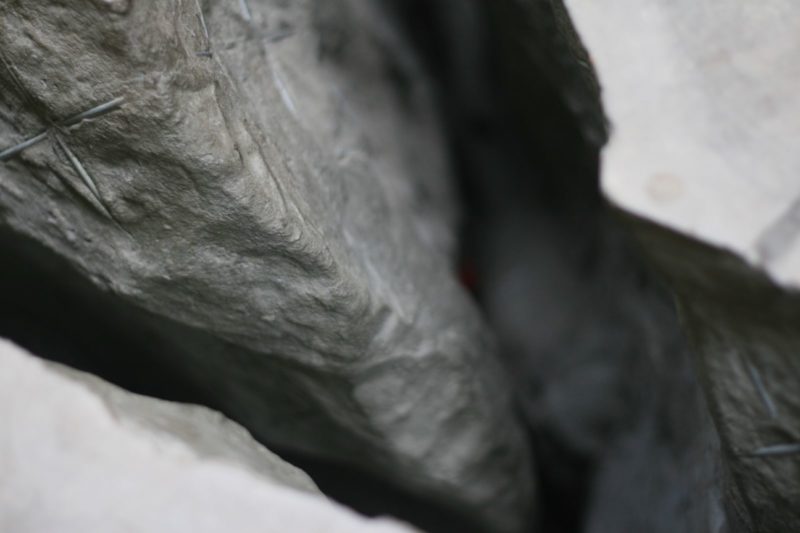
The artist invited the public to contemplate on a much deeper level and observe the world from the perspective of the oppressed, who are often placed at the bottom of society.
During the press conference of the opening of Shibboleth, Salcedo said 78:
What is important is the meaning of the piece. The making of it is not important.
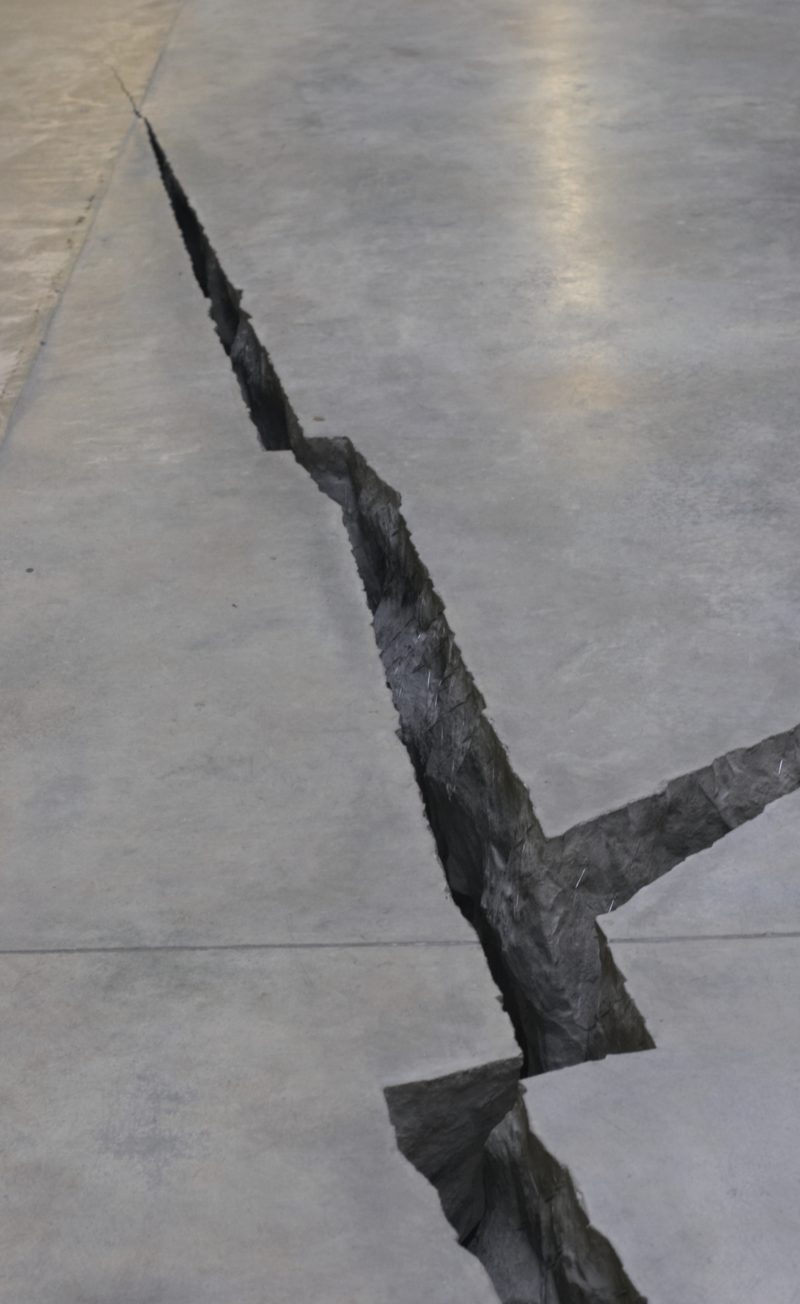
Once the installation period ended, Salcedo sealed the crack and it has remained under the floor of the Turbine Hall. It serves as a scar and permanent reminder of the unwelcome immigrants that are often ignored and victimized.
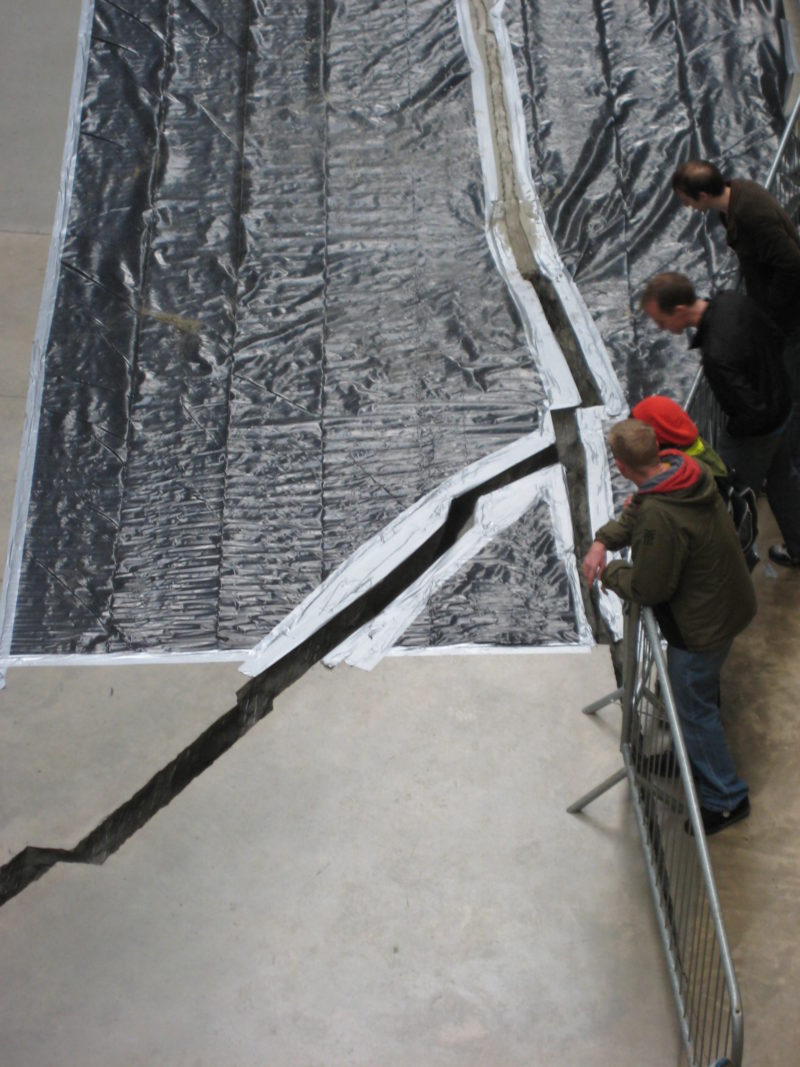
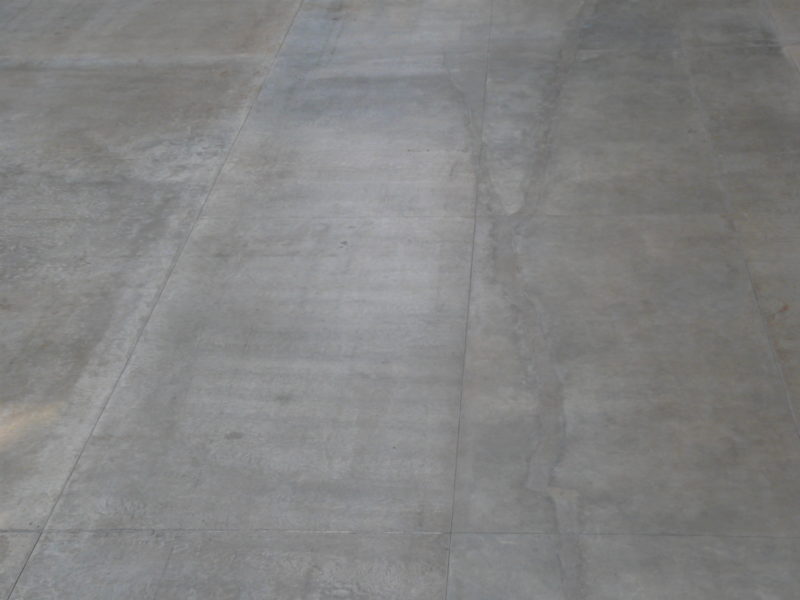
Roberto Uribe, art technician and studio partner of Salcedo, commented 910:
It’s a scar that is now in the museum. So the piece, it’s still there and I find it very symbolic and very poetic—the absence is still present.
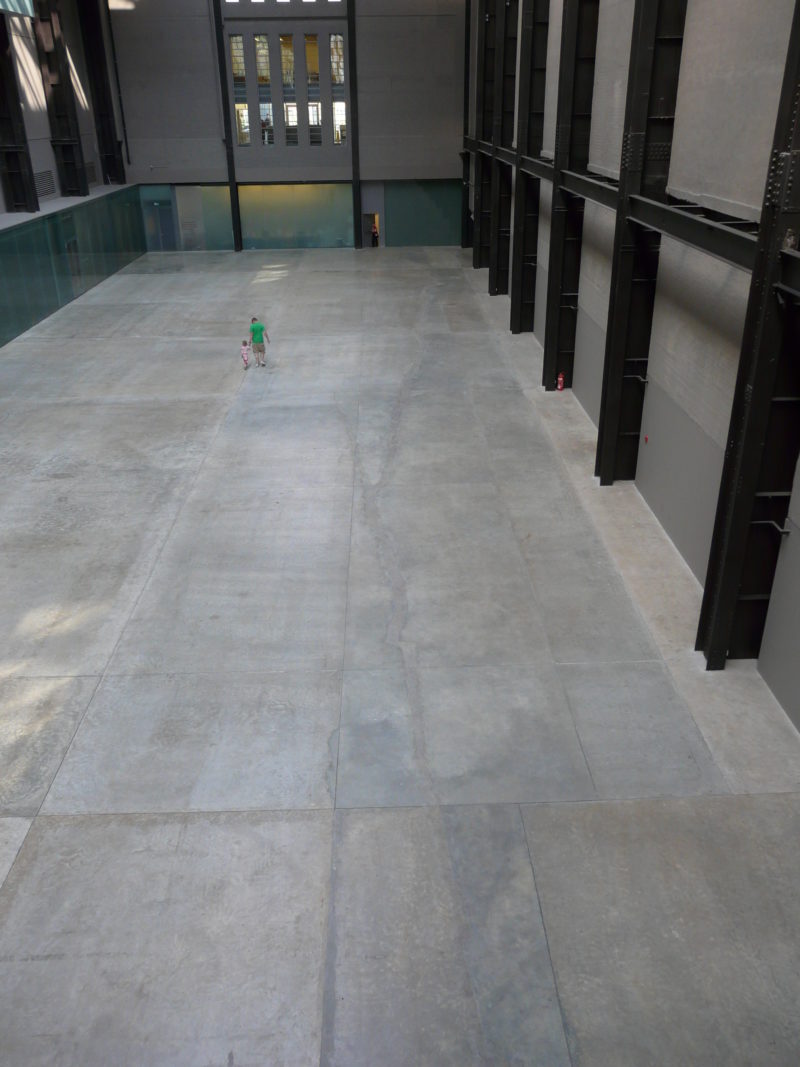
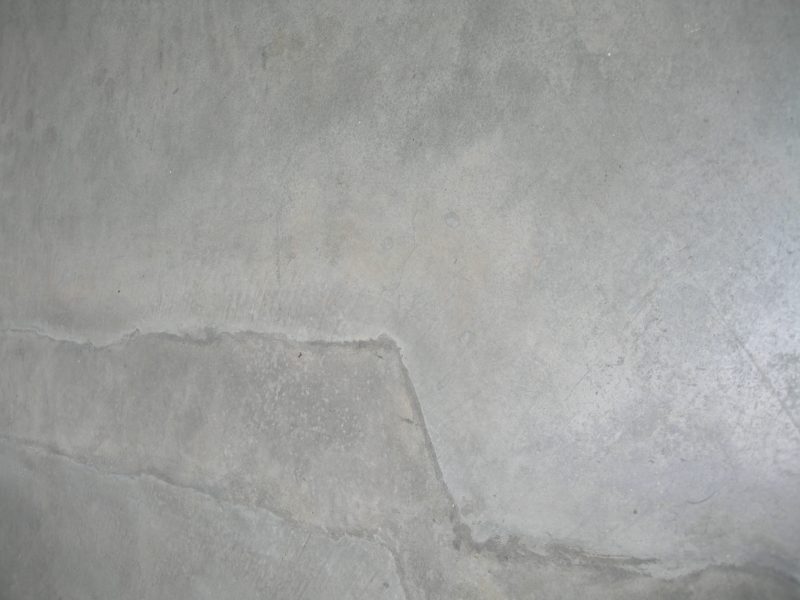
Shibboleth was created at a budget of £300,000 as part of the 8th Unilever Series, an event that is sponsored each year by the Unilever Group at the main entrance lobby of the Tate, also known as the Turbine Hall.
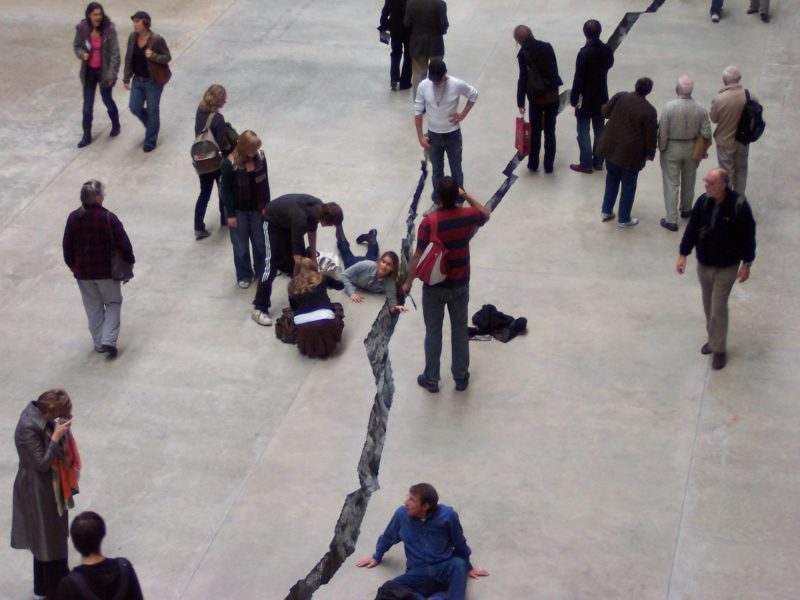
Other large-scale 11 exhibitions held at the Turbine Hall include Anish Kapoor’s Marsyas 12 (2002-2003), Olafur Eliasson’s Weather Project 13 (2003-2004), Rachel Whiteread’s Embankment 14 (2005-2006) and. Ai Weiwei’s Sunflower Seeds 15 (2011).
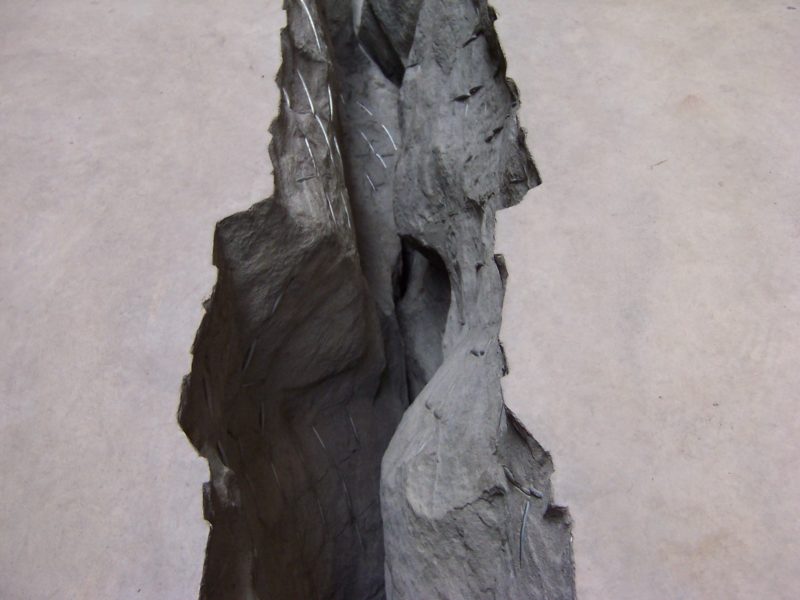
Salcedo’s work draws parallels to Lucio Fontana’s 16 cut pieces, Gordon Matta-Clark’s Splitting 1718 and Alberto Burri’s Cretto di Burri 1920, yet it is vastly different in its approach and meaning.
Background
Salcedo titled the exhibition Shibboleth after the Old Testament story 2122. In the story, Jephthah and the Gileadites overcame the Ephraimites. When the survivors of Ephraimite attempted to run away, they were commanded to pronounce the word Shibboleth as a test.
Due to the heavy Hebrew dialect of the Ephraimites, they were unable to manage this pronunciation which allowed the Gileadites to tell the people of the two tribes apart. Those who could not pronounce the word were revealed as the Ephraimites and were killed to prevent them from sneaking back to their defeated home territory.
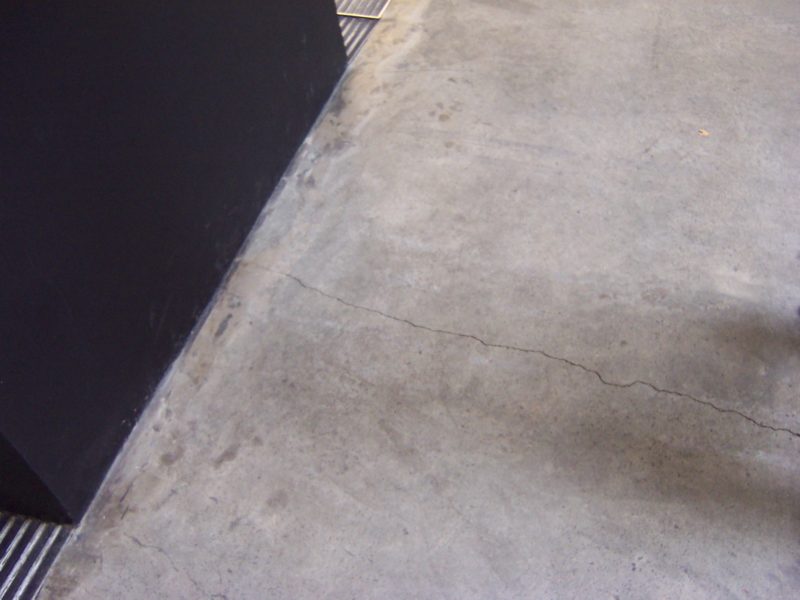
Salcedo, therefore, gave the installation the title Shibboleth to represent a token of power, the power to judge people around us, reject them, and eradicate them from society through merciless killings.
By creating the crack on the floor of the hall, the artist was welcoming the audience to look down and confront the discomforting truths about the modern society that we have created ourselves.
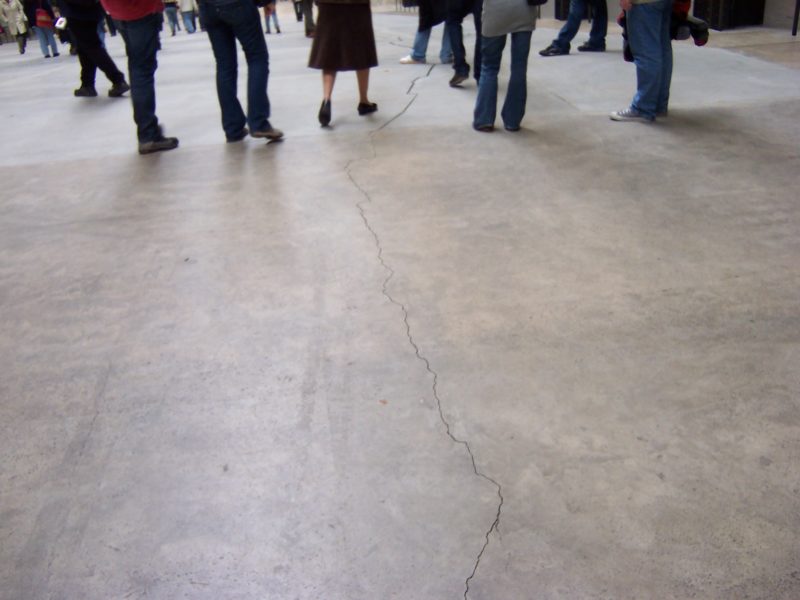
Visitors looking down on the crack were treated to various perspectives of the 548-foot-long crack as one walked along the winding line. Inside, the viewer could also note the wire mesh that was embedded along each side of the crack.
The changing perspective was one of the primary goals of the artist. According to Salcedo, this is what allowed the audience to see the world from the perspective of the victims, the sufferers, and the disenfranchised.
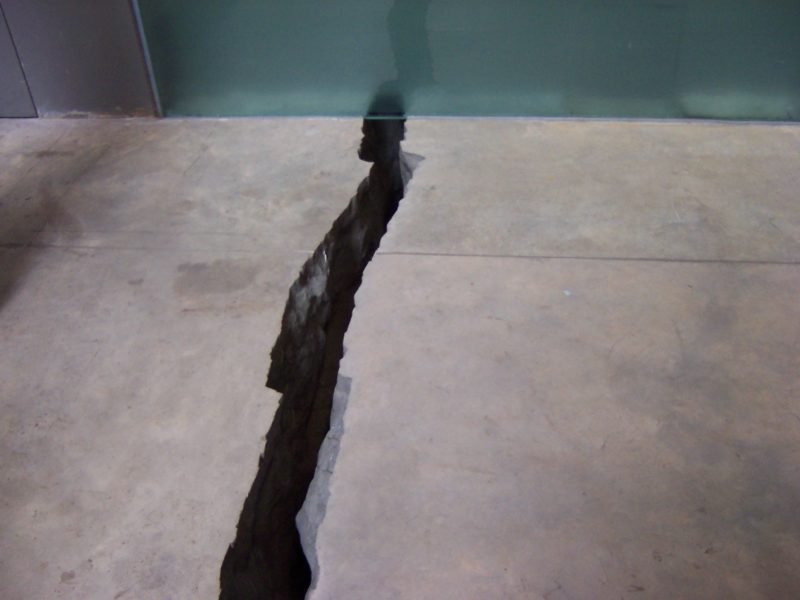
Accidents
When she created the crack on the floor, the artist was inviting audiences to encounter the installation and engage with it in quiet contemplation rather than get distracted by the spectacular architecture of the Tate Modern.
The long-foot-wide crack that ran through the entire length of the Turbine Hall, however, led to a minor accident with one of the onlookers falling in headfirst. The older woman involved in the accident lost her footing and fell and had to be helped out by friends and other onlookers.

Despite the accident, the Tate maintained the installation as originally intended and did not put a barrier to protect the observers. Instead, the museum opted to add signage and handed visitors leaflets to warn them about the crack, which allowed the museum to maintain the integrity of the installation.
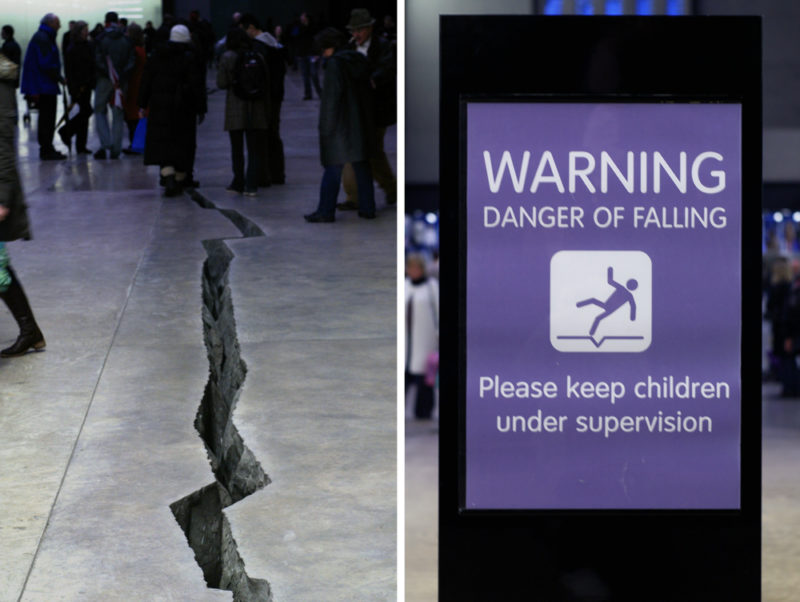
According to the Evening Standard 2324, at least 15 people suffered minor injuries in the first eight weeks after the installation was opened in October. The piece was popularly nicknamed Doris’ Crack by attendees.
A Serbian visitor speaking to The New York Times said 2526:
Art is dangerous sometimes.
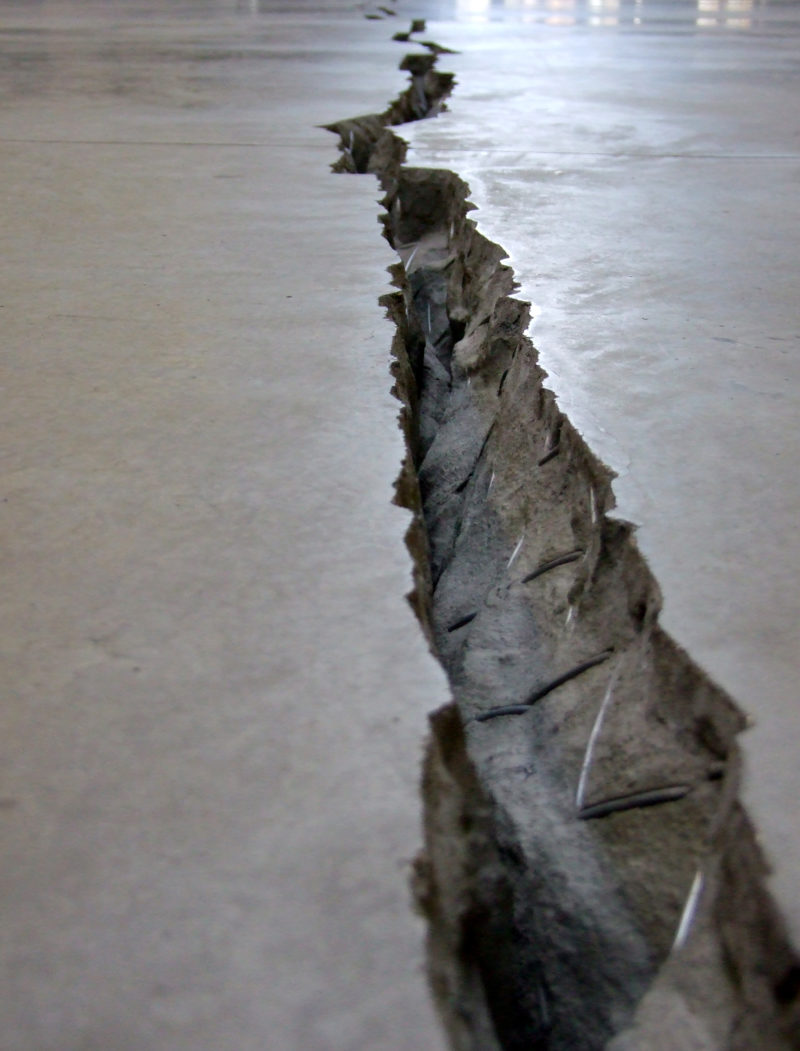
Shibboleth was Salcedo’s first work in the Unilever Series, but it was certainly not the most dangerous one. The previous installation, Test Site 2728 by Carsten Höller 29, which consisted of massive tubes that onlookers and visitors slid through, had to be closed off and padded with extra cushioning after some audience members sustained injuries 3031 catapulting through the tube onto the hard floor. One visitor eventually ended up suing Tate Modern 3233 after breaking her hand on the show.
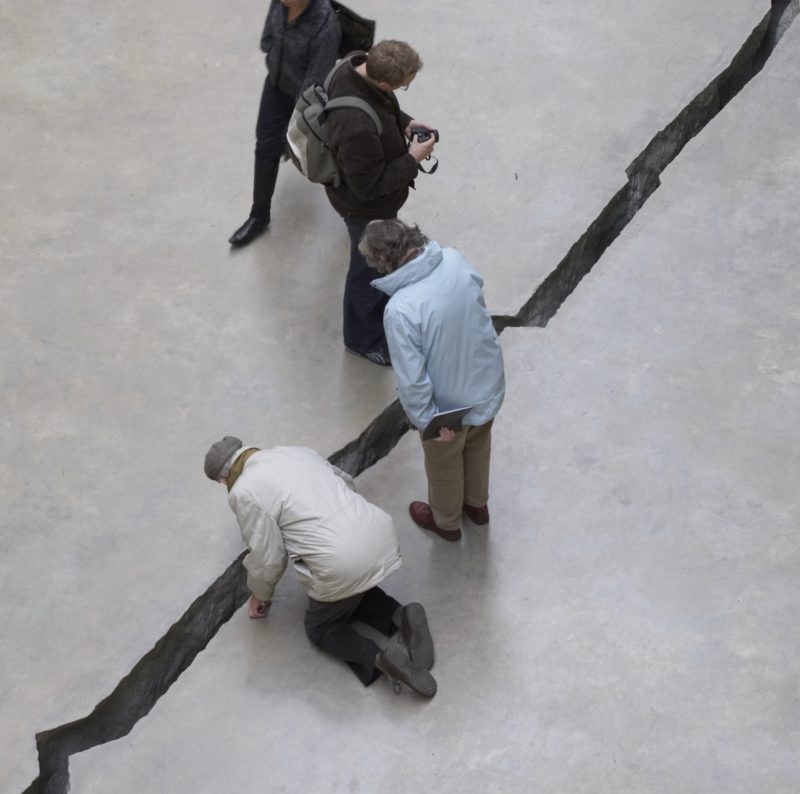
About Doris Salcedo
Doris Salcedo’s experience as a Colombian artist working in Europe has made her compassionate to the predicament of marginalized individuals, which is what inspired Shibboleth to begin with.
Between 2002 and 2003, Salcedo completed several installations that were inspired by this line of thought, including a staged performance at the side of the Palace of Justice in Bogotá commemorating the 1985 attack 3435 that saw 300 individuals held hostage in the building. The hostage situation ended in a bloody hostility between the rebels and military, so Salcedo prepared a performance involving wooden chairs that lasted for more than 50 hours.
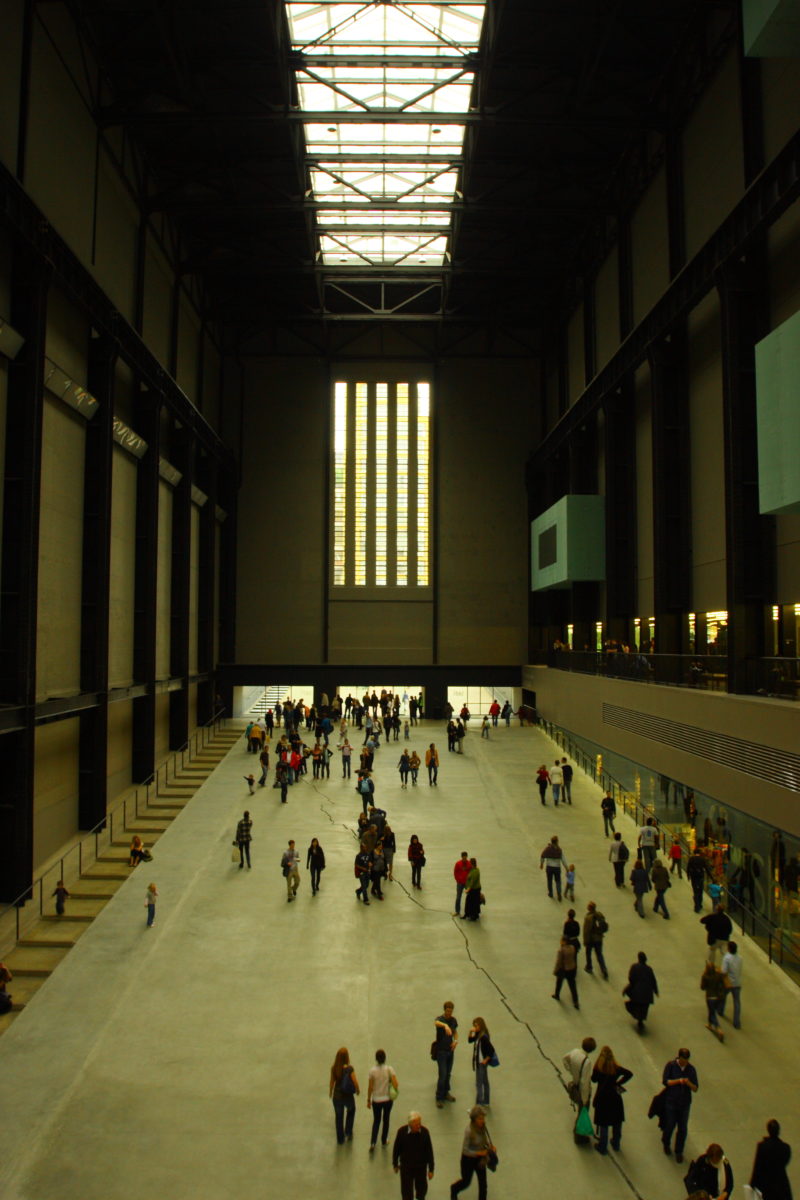
Salcedo is also well-known for an installation made of 1,550 old chairs 3637 in Istanbul for the 8th International Istanbul Biennale. Angered by the state of the world, as well as her own experience as an immigrant in Europe, her works, including Shibboleth, have always been deeply personal and political.
